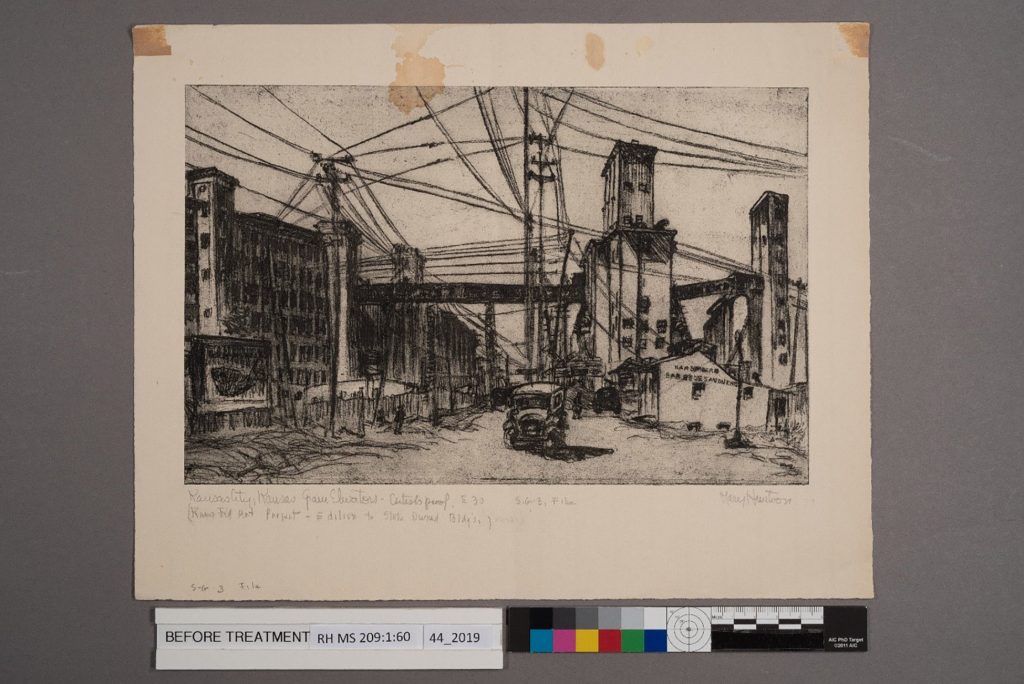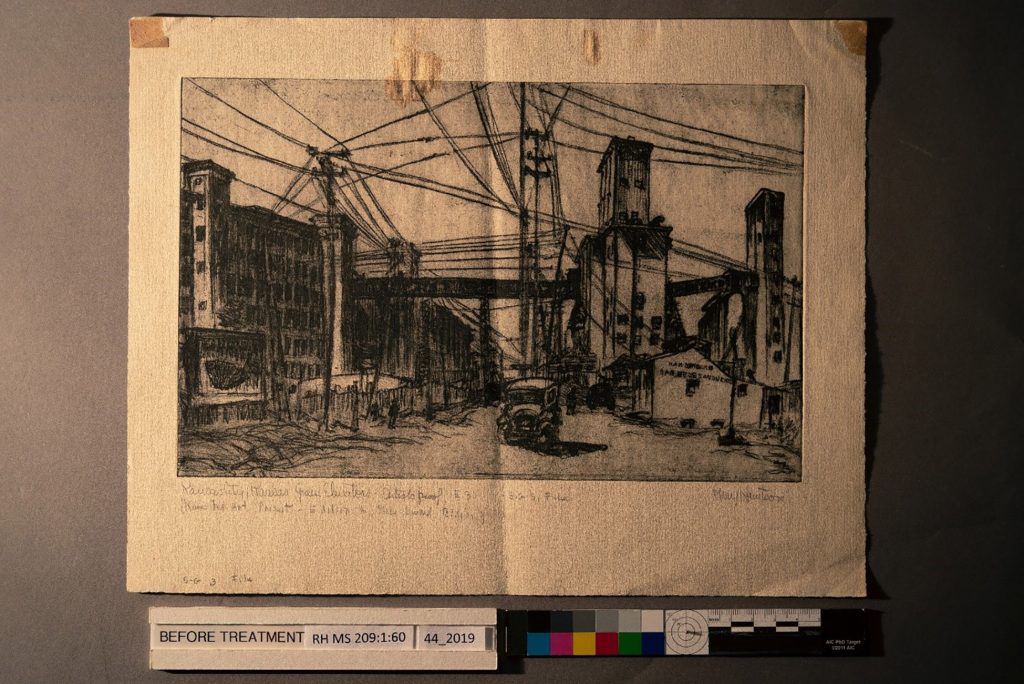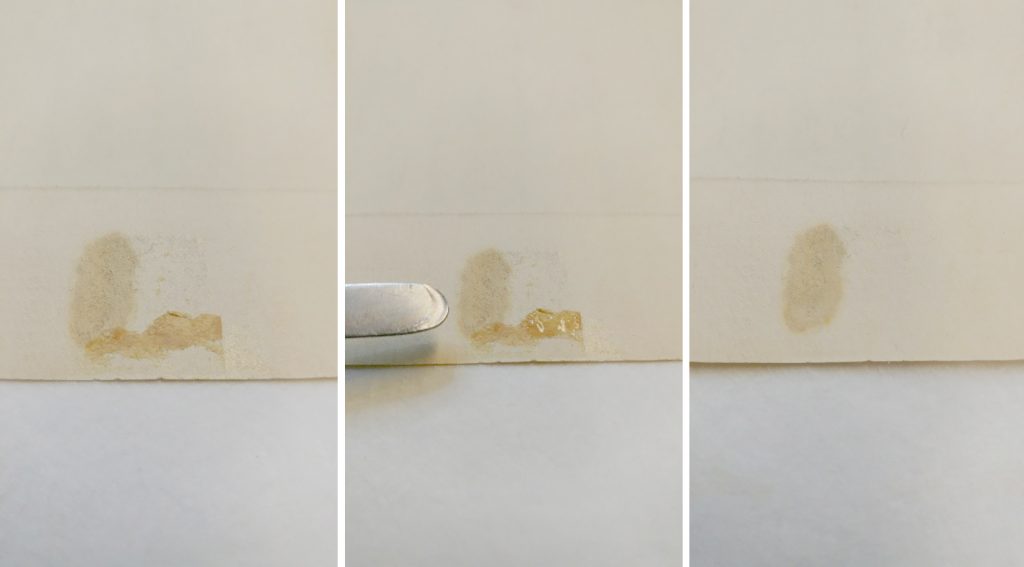Treatment of Mary Huntoon’s “Kansas City, Kansas Grain Elevators,” an Etching: Part 1
The Kenneth Spencer Research Library is home to the collection of papers and original artwork by Kansas artist and art therapist, Mary Huntoon (1896-1970). As part of a collaborative initiative between KU Libraries and the Spencer Museum of Art, funded by the Andrew W. Mellon Foundation, many of the prints, drawings, and watercolors by Huntoon are being treated over the next two years.
Huntoon was born in Topeka, Kansas. After graduating from Washburn University in 1920, she studied at the Art Students League in New York City for six years under Joseph Pennell and Robert Henri, and was a good friend and colleague of William Stanley Hayter, founder of Atelier 17. She later became director of the Kansas Federal Art Project and made significant contributions to the early development of art therapy.


Kansas City, Kansas Grain Elevators, is an artist’s proof print (a print made prior to the final edition), an etching in black printing ink on cream, laid, machine-made paper. The primary condition issue involves two large brown stains along the top edge that interrupt the image area and cause distortions in the sheet. An overall washing treatment was proposed in order to reduce the appearance of the stains.


In preparation for the treatment, the printing inks were tested to ensure they would be stable during the wet treatment. The outer margins and back of the print were selectively surface-cleaned with a soft sponge, avoiding all printed areas, as well as the graphite pencil inscription. Surface-cleaning ensures that loose and embedded dirt and grime are not driven deeper into the paper support during the wet treatment.

Brown paper tape attachments on the top edge of the front and back of the print were removed with a methylcellulose poultice. The attachments had been partially removed at some point, and the top layer of the paper was slightly skinned. The poultice delivers moisture in a controlled way, softening the adhesive, and allowing safe removal of the attachment.

The print is now ready to be washed. Stay tuned for Part 2 to learn how the stains were reduced.
Jacinta Johnson
Associate Conservator, Mellon Initiative
Tags: Conservation Services, conservation treatments, Jacinta Johnson, Kansas Collection, Mary Huntoon, Mellon Initiative, Spencer Museum of Art
